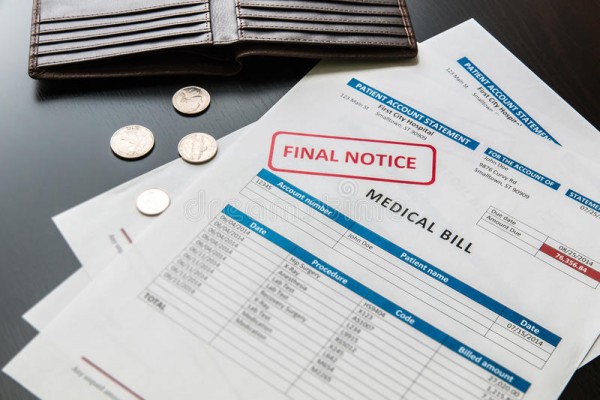By Noam N. Levey / KHN
What Happened: There were times after her sons were born 10 years ago when Allyson Ward wondered whether she and her family would lose their home.
On some days, she would tick through a list of friends and family, considering who could take them in. “We had a plan that we were not going to be homeless,” Ward recalled.
Ward is a nurse practitioner who works at a neonatal intensive care unit in Chicago. Her husband, Marcus, runs a small nonprofit.
But when the couple’s boys, Milo and Theo, were born 10 weeks prematurely, their lives were upended financially.
The twins were diagnosed with cerebral palsy. One required multiple surgeries to fix a breathing disorder. The babies spent more than three months in a NICU.
Ward and her husband scrambled to get the boys the care they needed, including years of physical and occupational therapy. The bills, which topped out at about $80,000, overwhelmed them.
Much of it at first was from hospital care. Then their health plan denied thousands of dollars in claims for the boys’ therapies, deeming some unnecessary.
Desperate, Ward and her husband loaded up credit cards, borrowed from relatives, and delayed repaying student loans. They moved back to the Midwest from Dallas to be closer to family who could help them.
In Chicago, Ward took on extra nursing shifts, working day and night several times a week. Her husband, who was finishing a master’s degree, watched the babies.
“I wanted to be a mom,” she said. “But we had to have the money.”
(Taylor Glascock for KHN and NPR)
What’s Broken: Ward and her husband had health insurance through her employer in Texas.
But that’s often not enough to protect patients from a major medical event. Most Americans who have medical debt had coverage, according to a KFF survey.
Even with health insurance, childbirth can be very expensive. One in 8 Americans who have health care debt say it was at least partially caused by pregnancy and childbirth.
Ward and her husband are also among tens of millions of Americans who end up with medical debt because their health plan didn’t pay for something they believed would be covered. Such insurance issues are the most common form of billing problem cited by Americans with debt.
What’s Left: Since moving back to the Midwest, Ward and her husband have been slowly paying down the debt.
They bought a small house in Chicago in 2016. And Milo and Theo have been able to stay on grade level at school.
Although cerebral palsy can be severely disabling, the boys can run, ride bikes, and go rock climbing, which Ward credits to the many therapists who have worked with them.
Ten years later, though, the family is still paying off nearly $10,000 in medical debt on their credit cards.
Ward said sometimes at work she looks sadly at new parents in the NICU, thinking about their financial strains ahead. “They have no idea,” she said.
About This Project
“Diagnosis: Debt” is a reporting partnership between KHN and NPR exploring the scale, impact, and causes of medical debt in America.
The series draws on the “KFF Health Care Debt Survey,” a poll designed and analyzed by public opinion researchers at KFF in collaboration with KHN journalists and editors. The survey was conducted Feb. 25 through March 20, 2022, online and via telephone, in English and Spanish, among a nationally representative sample of 2,375 U.S. adults, including 1,292 adults with current health care debt and 382 adults who had health care debt in the past five years. The margin of sampling error is plus or minus 3 percentage points for the full sample and 3 percentage points for those with current debt. For results based on subgroups, the margin of sampling error may be higher.
Additional research was conducted by the Urban Institute, which analyzed credit bureau and other demographic data on poverty, race, and health status to explore where medical debt is concentrated in the U.S. and what factors are associated with high debt levels.
The JPMorgan Chase Institute analyzed records from a sampling of Chase credit card holders to look at how customers’ balances may be affected by major medical expenses.
Reporters from KHN and NPR also conducted hundreds of interviews with patients across the country; spoke with physicians, health industry leaders, consumer advocates, debt lawyers, and researchers; and reviewed scores of studies and surveys about medical debt.
Noam N. Levey: nlevey@kff.org, @NoamLevey














